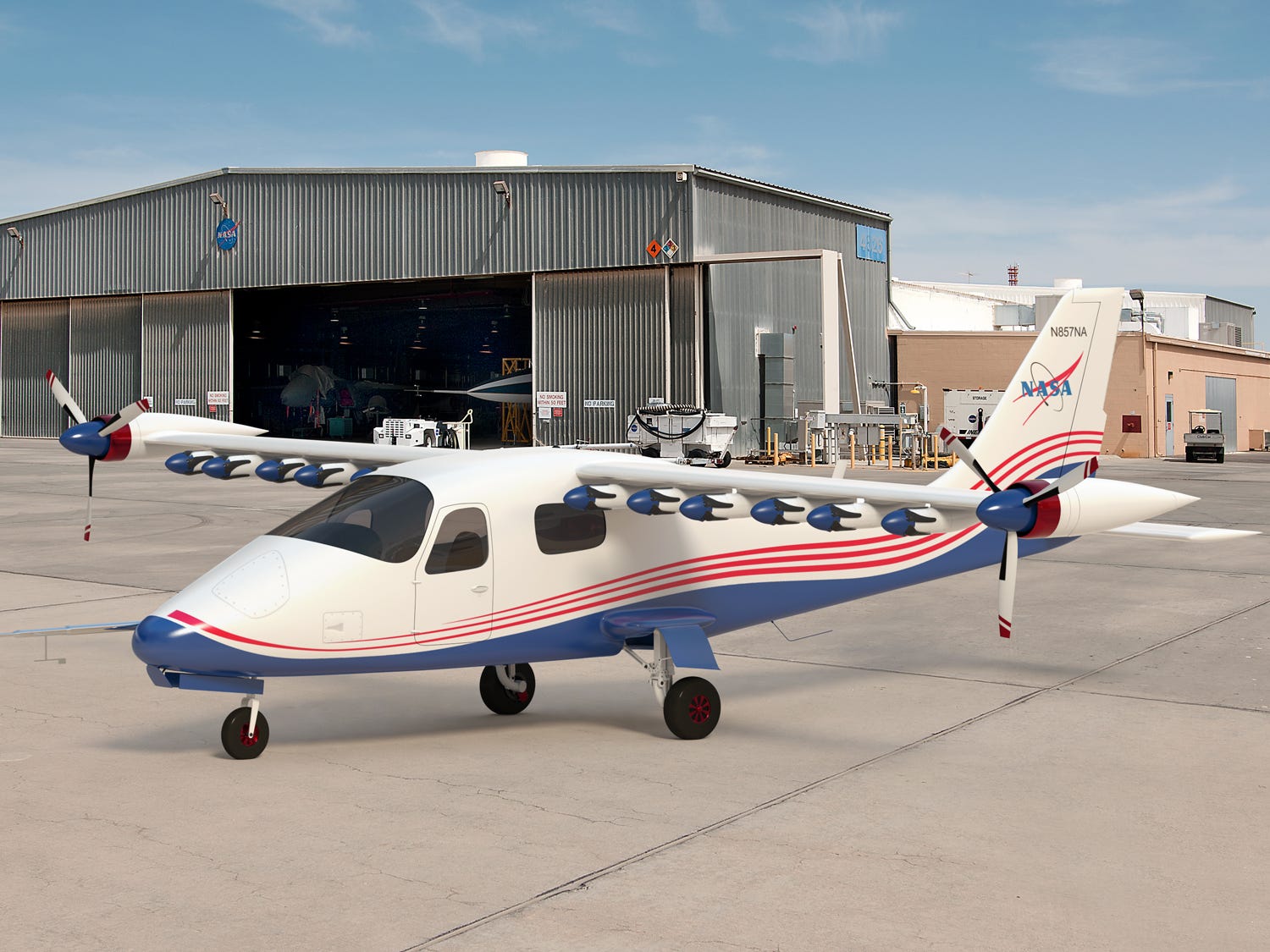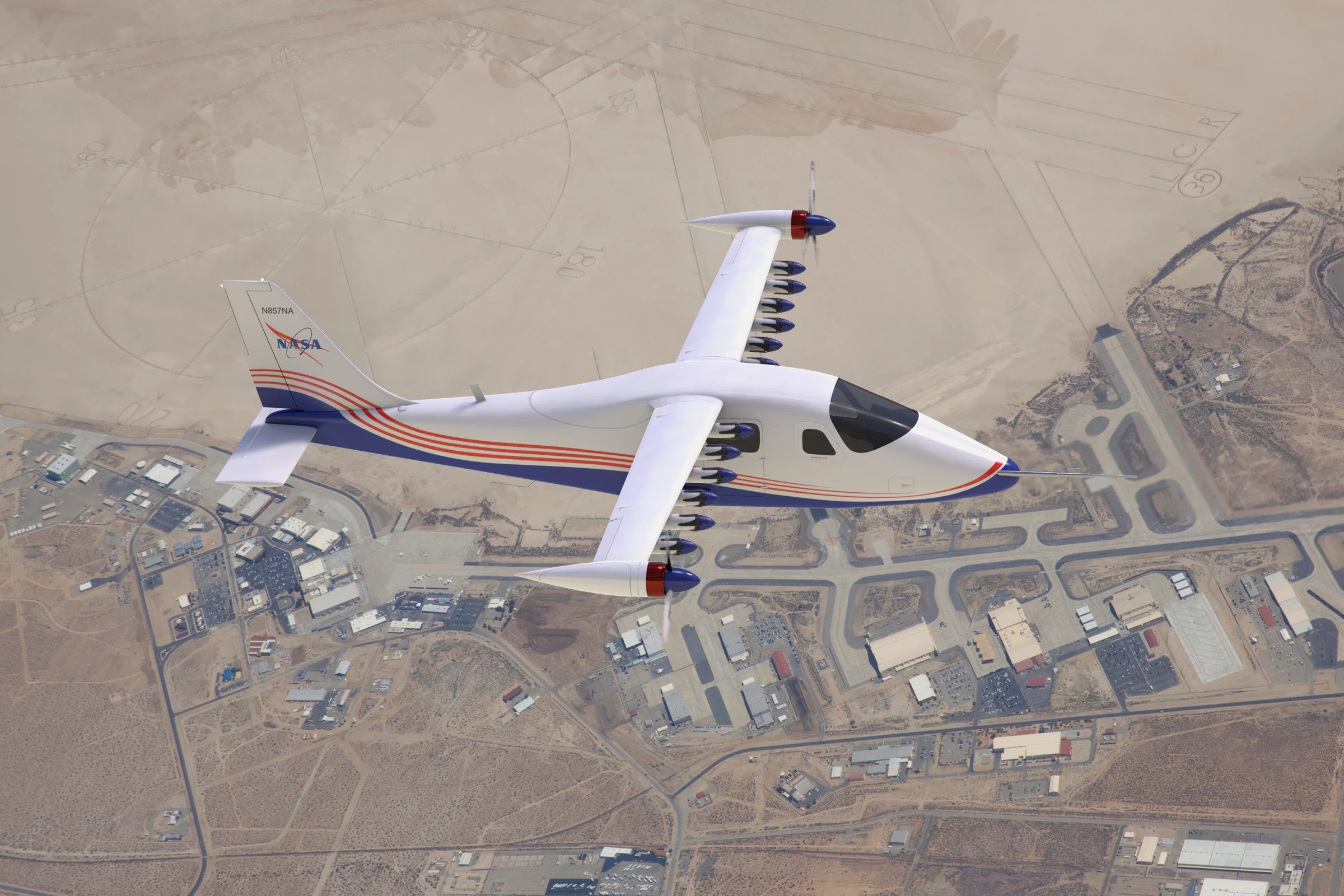
NASA's X-plane program, established in 1946 to test and evaluate new technologies and aerodynamic concepts, began with the launch of the X-1 — the first plane to break the sound barrier. Since then, the endeavor has led to numerous industry breakthroughs, including the first supersonic and hypersonic flights, and the first crewed suborbital flight.
Now, the US space agency is using its technological prowess to build efficient electric planes that will help commercial airlines to achieve their goal of a 50 percent reduction in carbon dioxide emissions by 2050. On March 27, 2020, NASA released the first concept images of the fourth and final configuration of its all-electric X-57 Maxwell. When ready, the first manned X-plane in over 20 years promises a 500% increase in "high-speed cruise efficiency" over conventional airplanes, while producing zero emissions and less noise pollution.

In development since 2016, the X-57 Maxwell — nicknamed after 19th-century physicist James Clerk Maxwell, who specialized in electromagnetism — began its life as a four-seater conventional aircraft. Since then, it has undergone several iterations, all designed to make the plane more efficient.
The latest rendition, developed by a team of NASA engineers, researchers, and pilots, will feature 14 electric motors. Twelve small high-lift engines with foldable propellers will be fitted along the edge of the aircraft's wings, while two large propellers, with a diameter of 5 feet each, will sit at the wingtips. The smaller motors, which will deactivate once the aircraft is airborne, will allow the X-57 to take off and land smoothly, while the two at the edge of the wings will keep it airborne. The NASA team believes the configuration will make the aircraft much more efficient than conventional planes and allow it to cover longer distances than current all-electric planes.

NASA's principal investigator Sean Clarke told Business Insider that they decided to require a pilot, after two decades of autonomous X-planes, because having an experienced aviator on board will allow them to identify and resolve issues efficiently.
However, those hoping for a ride on the aircraft will be disappointed given that it will only have room for one. According to Clarke, the rest of the cabin will be occupied by instruments and two 400-pound lithium-ion battery packs that will provide the aircraft with 23 kilowatt-hours of power! Fortunately, the X-57 Maxwell's design is meant to serve as a blueprint for commercial aircraft, which means that "green" planes with room for all may soon be a reality!
Resources: Nasa.gov, Businessinsider.com, NewAtlas.com
